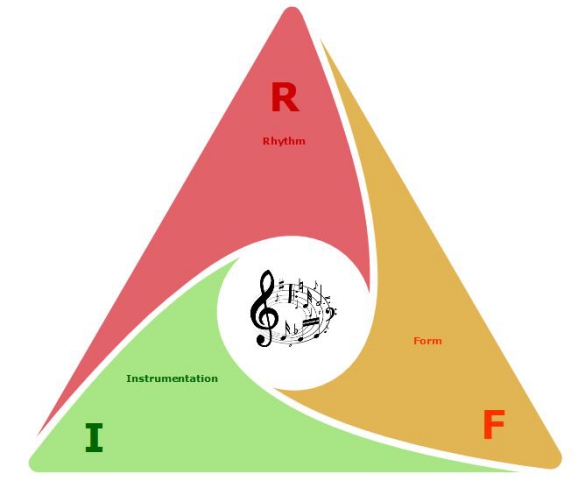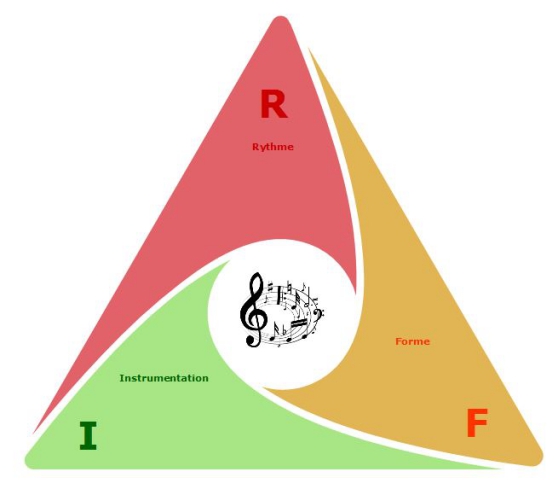Your personal music search space.
Augment your understanding of music.

YMUSIC SEARCH ENGINE
______________________________________________________________________________



When you want to conduct useful (re)search that will bring you real data about the content of a piece of music, what you generally find is a set of metadata that inform you about the social profile of music listeners (like age, gender or location) or a scarcely readable screen capture related to the sounds present in a piece of music, along with complex mathematical equations.
However, most of the time, you are neither an engineer, nor a social media growth hacker. All these charts and symbols are very interesting for archivists or developers, yet not for you. The kind of data that you would appreciate finding, yet do not find are data that, when analyzed, can be used directly to compose and produce a title that will reveal you as a musician. Formally taught or not, you already know (a bit of) music theory and (want to) practice an instrument, yet your learning materials, at the moment, do not help you to express your individual views on music through useful patterns.
What could these useful patterns be? YMusic is offering tools to build relevant music queries: the ones that, when put together, may help you design a coherent research in the field of music. The target of such a research may be different idepending on what you want to achieve. For instance, composers may use YMusic to reveal musical patterns found in the work of other composers, and use these patterns as a source of inspiration to create new works.
Although YMusic can be helpful to analysts, composers, (multi-)instrumentalists, mixing engineers and the like, lyricists are also welcome. In YMusic, they can use the traditional search box to introduce keywords and get lists to find words that they love, as well as information about sound. However, the essence of our music search engine is to think in terms of musical data in order to share them with those who needs them the most in order to deliver a piece of music.
Using YMusic in its first version, think "RIF" or "rhythm, instrumentation and form". YMusic currently offers various parameters to search music in musical ways, mainly related to these three aspects of music. What to do with the data ? You must fix the target before running any search. Examples : "I want to know what is the average rhythmic density in cantatas composed by Bach","I would like to display the electronic instruments used in songs written by Maroon 5", etc.
Once your target is fixed, begin to browse the database and unfold the results for each search. Take notes and… search inside yourself to use both what you already know and these new data. Question yourself: "What is the purpose of music analysis after all and what can learners do with the result?" It is a real-world question asked by students in music. The best teachers answer like this: "Analyzing music through different lenses, from rhythm to instrumentation, help students and new composers to understand and apply the principles of music much better". In fact, by investigating a vast sum of musical data, they have a grasp on key concepts involved in music processing. By manipulating its elements and identifying the relationships between these elements, one can evaluate the content of a piece of music much better. Whether or not based on sheet music reading, it is a first step towards musical composition and production!
HOW CAN YMUSIC CURRENTLY HELP YOU TO CONDUCT EXTENSIVE RESEARCH IN THE FIELD OF MUSIC?
If you prefer to get technical data sheets analyzing short classical music titles, you can consult the classical sheets section. They are written especially for the classroom.
We wrote 19 "RIF" (for "rhythm, instrumentation, form") datasheets that could help you organize the data displayed by the YMusic search engine for each song in its database and other types of data: for instance those related to specific composition techniques used in songwriting and those provided by mixing engineers.
This exercise does not pretend to provide a complete framework for academic research, yet it may lead to the formulation of hypotheses that can sustain such research, and it is valuable, especially for researchers who are working on music compositions that are less known, whatever their genre is. In fact, in that case, music composition and production data may be difficult to find, as we experienced when we wrote these sheets.
Then, how can the different types of (re)searchers (teachers, students, composers who are beginners or hobbyists, archivists, etc) organize the data found by the YMusic search engine and cross-check them with other leaks? Even if there are guidelines, there is no unique way to proceed. Thus, please consider the following datasheet as a trial that can inspire you to develop your own method. Their only target is to give you insights related to the rhythmic aspects, the instrumentation and the form of several popular music compositions. Do not hesitate to share your own points of view about your research problem and what you could expect from the YMusic search engine: as much as possible, we will try to give you a quick response.
Also, please notice that the music titles presented in these ‘RIF’ sheets are popular hits (the first seven ones being 2010s hits). It is notably because such compositions are short, which allowed us to outline some paths to understand them better, both in light of YMusic data and production data provided by music industry professionals involved in recording and production. We selected pieces from the best-selling digital and physical singles, thus from the most popular songs.
MUSIC RESEARCH FOR THE PURPOSE OF MUSIC ANALYSIS, COMPOSITION AND PRODUCTION: THE ‘RIF’ DATASHEETS